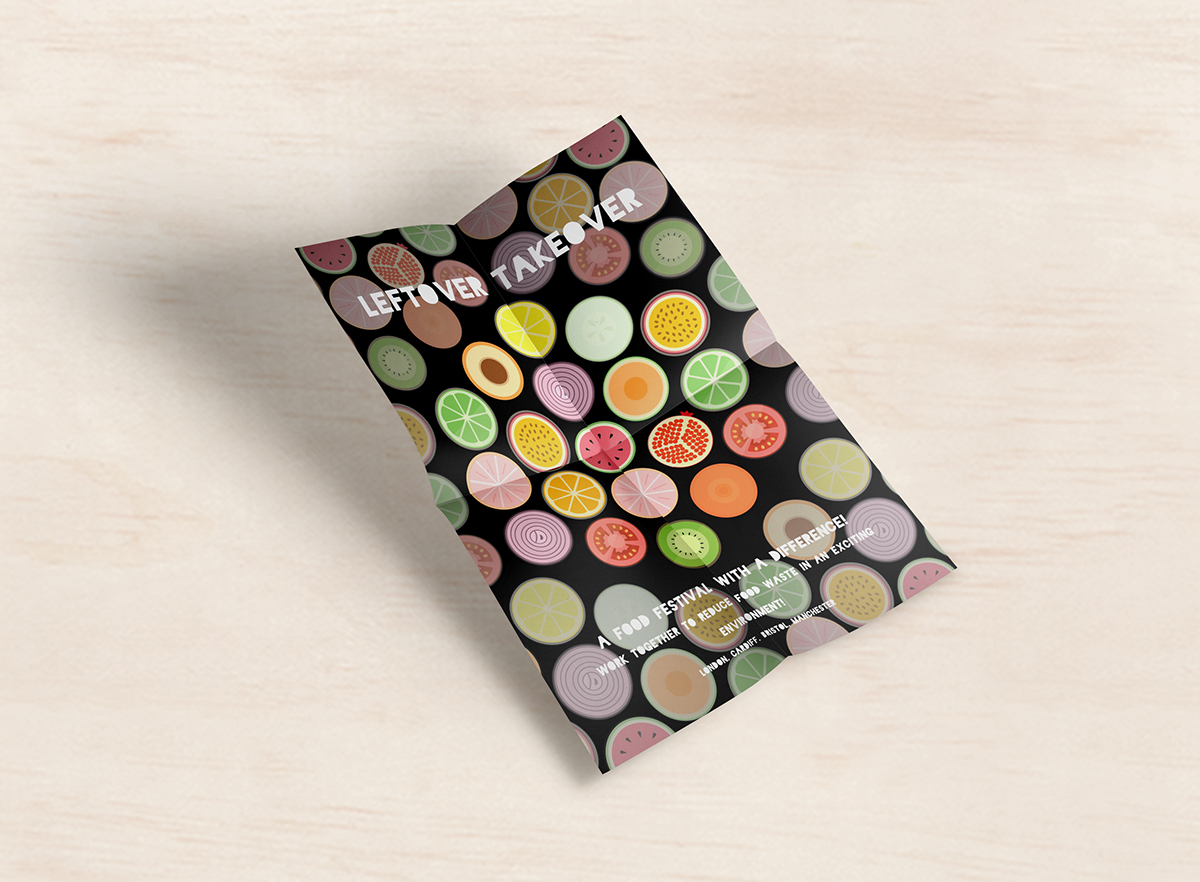The Brief
The challenge set by the RSA Student Design Awards was to design a way to encourage and support individuals, households, businesses and/or communities to reduce food waste. Food waste is a growing issue. It is estimated that 50% of grown food goes to waste globally and 33% of all food produced is not eaten and goes to waste – accounting for 1.3bn tonnes or 750bn USD. 28% of food produced from arable land is never eaten – while we cut down forests to increase arable land (source UN).
Leftover Takeover
I decided to tackle the leftover element of food waste, as through research I discovered that over 50% of the food that gets wasted, could have been eaten. I wanted to target 18-30 year olds and educate them about food waste in a different way, through creating a food festival with a difference - 'The Leftover Takeover'. My idea was to create a food festival that served meals created from leftovers, and food that otherwise would have been wasted to show the possibilities that leftovers hold and that they don't always need to go to the bin.

Vector designs for the concept and promotional material. I decided to use cross sections of food to try and show the idea of 'leftovers'.


Advertising poster for the Leftover Takeover event.



Store graphics: the food trucks that would serve food made from leftovers at the event.


#LoveYourLeftovers - social media element, encouraging people to tweet about the food festival and a hashtag that the public can use to share experiences, leftover recipes and tips.


A few visuals of how the concept could be taken onto the web. I would have liked to create an online community that people could visit at home after attending the festival, to find all the useful information they learned at the event, and share tips with their fellow festival goers.








